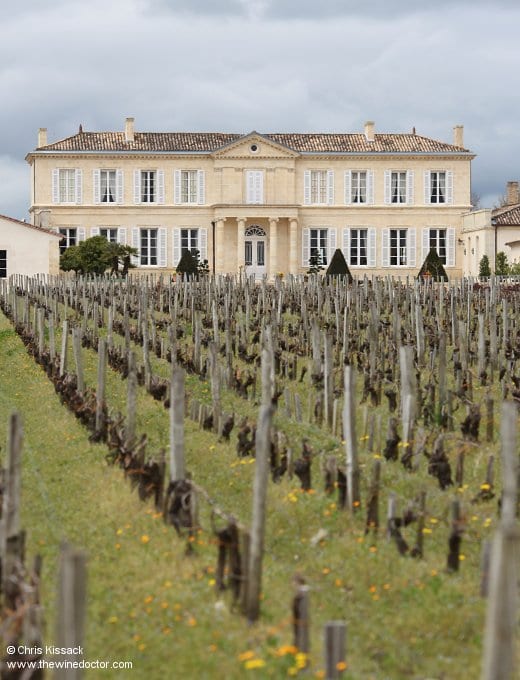Château Branaire-Ducru
‘There it is again!’ he cried. ‘Something in the middle taste. Yes, yes, of course! Now I have it! The wine comes from around Beychevelle. I remember now. The Beychevelle area, and the river and the little port. Could it actually be Beychevelle itself? No, I don’t think so. Not quite. But it is somewhere very close. Talbot? Could it be Talbot? Yes, it could. Wait a moment.’
He drank a little more wine, and out of the corner of my eye I noticed Mike Schofield and how he was leaning further and further forward over the table, his mouth slightly open, his small eyes fixed on Richard Pratt.
No, I was wrong. It is not a Talbot. A Talbot comes forward to you just a little more quickly than this one; the fruit is nearer the surface. If it is a ’34, which I believe it is, then it couldn’t be a Talbot. Well, well, let me think. It is not a Beychevelle and it is not a Talbot, but – it is so close to both of them, so close, that I must be from somewhere almost in between. Now, which could that be?’
He was silent, and we waited, watching his face. Everyone, even Mike’s wife, was watching him now. I heard the servant put down the dish of vegetables on a table behind me, gently, so as not to break the silence.
‘Ah!’ he cried. ‘I have it! Yes, I think I have it!’
For the last time, he drank some wine. Then, still holding the glass up near his mouth, he turned to Mike and he smiled, a slow, silky smile, and he said, ‘You know what this is? This is the little Château Branaire-Ducru.’
– Taste, Roald Dahl (published 1945)
The late Roald Dahl was famed for his fantastic stories of chocolate factories, giant peaches and marvellous medicines. But he was also interested in writing for an older audience, these other tales perhaps less well known, but just as macabre and as well crafted as his children’s stories. And he was also, as I am sure you already know, a great lover of wine. Bordeaux featured strongly in his cellar, and he brought these interests together in Taste, in which Dahl told the story of a trickster wine taster who identifies a wine – region, appellation, château and vintage – completely blind, in order to win the hand of his host’s daughter in marriage. Of course, as with almost all of Dahl’s creations, all is not quite what it seems, and the villain is unmasked in the end.
Today Château Branaire-Ducru is not, as Dahl described it, so “little”, although like some of Dahl’s lesser-known stories it is still perhaps a little under-rated. Indeed, I feel this estate is too easily overlooked by many in favour of grander names from the St Julien appellation, it is one of the few classed growth estates that still offers truly good value, along with two or three of its near-neighbours, especially when buying mature bottles (although sadly I have never come across a bottle of the 1934). In this profile I explore the estate’s history, and its situation today.

